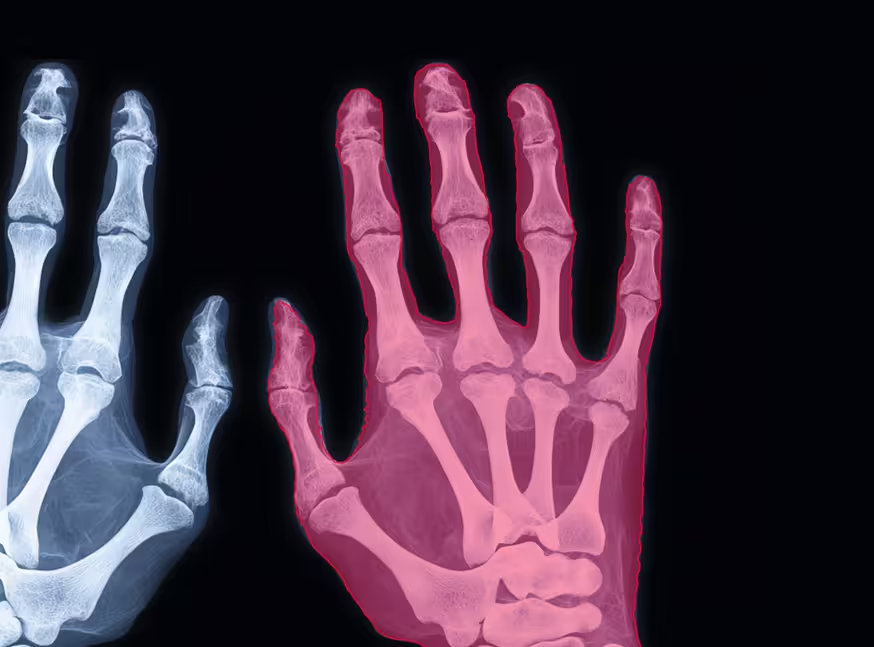Medical annotation
Optimize your medical data for AI and diagnostic support. Our medical annotation services guarantee precise structuring in accordance with industry standards (FDA, HIPAA, etc.), providing high-quality datasets to train and improve your specialized artificial intelligence models.


🧵 Customized annotation
Precise medical annotations, adapted to your use cases, formats (DICOM, NiFTI, HL7, etc.) and clinical requirements. Ideal for training your health AI models.
🥇 Expertise and excellence
Our annotators, from the medical community (doctors, radiologists, health students), combine clinical expertise and mastery of medical data annotation tools.
🧬 Annotate complexity
Neurosurgery, pathology, clinical reports: our experts know how to annotate rich and sensitive medical data, whether it is images, videos or specialized texts.
Annotation techniques

Bounding Boxes (or boundary boxes)
In medical annotation, “Bounding Boxes” make it possible to precisely locate anatomical structures, anomalies or instruments on medical images, in order to train AI models.
Identifying objects to be annotated
Precise framing of objects
Category labeling
Validating annotations
Radiology - Detection and location of tumors, nodules or fractures on images (MRI, CT, radiographs)
AI-assisted surgery - Real-time identification of surgical instruments in surgical videos
Digital pathology - Framing suspicious areas on scanned slides for histological analysis

Polygons
Polygons allow precise delineation of medical structures with irregular shapes — tumors, organs, lesions or bone structures — by following their exact outline on medical images (MRI, CT, etc.).
Identifying objects to be annotated
Precise framing of objects
Category labeling
Validating annotations
Annotation of bone structures (vertebrae, joints, fractures) for orthopedic or postural analysis
Precise delineation of tumors on MRIs or scanners, to measure their size and monitor their evolution
Organ segmentation (liver, lungs, heart, etc.) with complex contours, for training diagnostic models

Keypoints
Keypoints are used to mark specific positions on an object or body, such as joints, facial features, or anatomical landmarks. They allow a detailed analysis of shapes, movements or postures.
Identifying objects to be annotated
Precise framing of objects
Category labeling
Validating annotations
Body joint annotation for posture analysis, motion tracking, or detection of biomechanical abnormalities
Precise facial landmarking (eyes, nose, mouth) for facial recognition or emotion analysis
Dental keypoint annotation (crown, gum, root) for 3D modeling, orthodontic planning, or computer-assisted surgery

Free contours
The free contours (”Freehand Contours”) allow complex shapes to be manually drawn directly onto an image, with great precision. This method is particularly useful for segmenting irregular structures.
Identifying objects to be annotated
Precise framing of objects
Category labeling
Validating annotations
Manual delineation of irregular tumors or lesions on MRI or CT scans for precise clinical monitoring
Fine segmentation of soft tissues or complex organs (brain, liver, lungs) with non-standard shapes
Detailed annotation of wounds, burns, or pathological skin areas in dermatological imaging

Polylines
Polylines are series of connected line segments used to accurately annotate linear or sinuous structures. In particular, they make it possible to follow blood vessels, nerves, or even to delimit complex areas within organs such as the lungs.Polylines”) sont des séries de segments de ligne connectés, utilisées pour annoter avec précision des structures linéaires ou sinueuses. Elles permettent notamment de suivre des vaisseaux sanguins, des nerfs, ou encore de délimiter des zones complexes au sein d’organes comme les poumons.
Identifying objects to be annotated
Precise framing of objects
Category labeling
Validating annotations
Precise annotation of vascular networks (arteries, veins, capillaries) on angiographic images for blood flow analysis
Tracing of nerves or muscle fibers in MRI scans for neurological or surgical studies
Delineation of branched structures in lungs or bronchi for respiratory anomaly detection

3D Volumes
3D volumes (“3D Volumes”) allow structures to be annotated in volumetric data such as MRIs or scanners, taking into account depth and different sections.3D Volumes”) permettent d’annoter des structures dans des données volumétriques comme les IRM ou scanners, en tenant compte de la profondeur et des différentes coupes.
Identifying objects to be annotated
Precise framing of objects
Category labeling
Validating annotations
3D segmentation of brain tumors on MRI scans for surgical planning or radiotherapy preparation
Volumetric reconstruction of the heart or lungs from CT scans for functional and morphological analysis
3D annotation of internal organs (liver, kidneys, pancreas) to create anatomical models for medical AI training
Use cases
Our expertise covers a wide range of AI use cases, regardless of the domain or the complexity of the data. Here are a few examples:

Why choose Innovatiana?
Our added value
Extensive technical expertise in data annotation
Specialized teams by sector of activity
Customized solutions according to your needs
Rigorous and documented quality process
State-of-the-art annotation technologies
Measurable results
Boost your model’s accuracy with quality data, for model training and custom fine-tuning
Reduced processing times
Optimizing annotation costs
Increased performance of AI systems
Demonstrable ROI on your projects
Customer engagement
Dedicated support throughout the project
Transparent and regular communication
Continuous adaptation to your needs
Personalized strategic support
Training and technical support
Compatible with
your stack
We use all the data annotation platforms of the market to adapt us to your needs and your most specific requests!








Secure data
We pay particular attention to data security and confidentiality. We assess the criticality of the data you want to entrust to us and deploy best information security practices to protect it.
No stack? No prob.
Regardless of your tools, your constraints or your starting point: our mission is to deliver a quality dataset. We choose, integrate or adapt the best annotation software solution to meet your challenges, without technological bias.
Feed your AI models with high-quality, expertly crafted training data!








